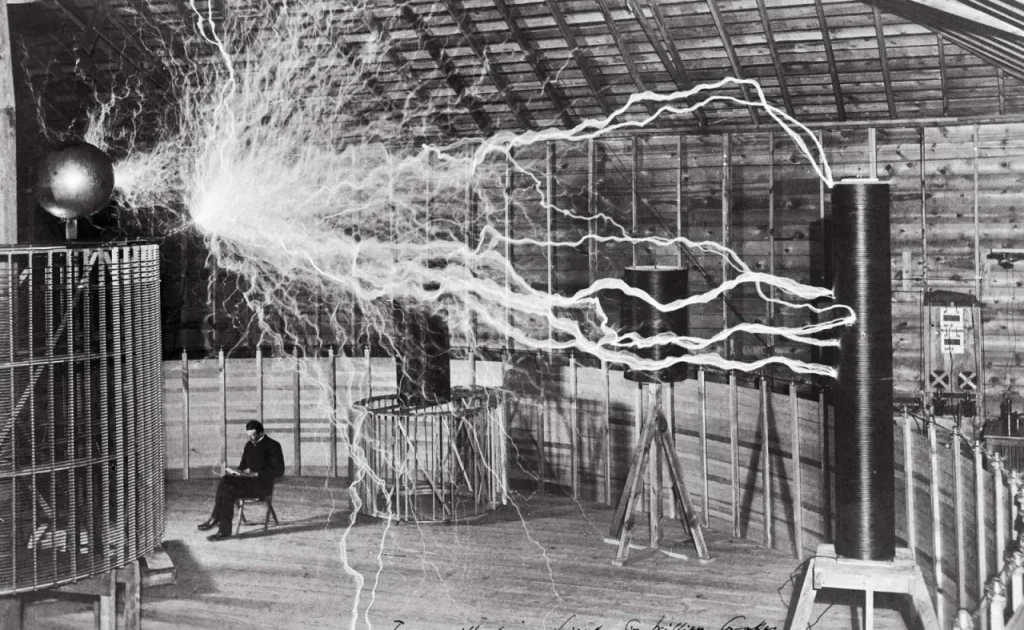
The question of whether Nikola Tesla was “crazy” is a complex one, and the answer depends on how you define the term. While he was undoubtedly a genius who revolutionized the field of electrical engineering, he also exhibited behaviors and beliefs that were highly eccentric and, by modern standards, suggest that he was struggling with significant mental health issues.
Here’s a breakdown of the key factors:
Obsessive-Compulsive Disorder (OCD): Many of Tesla’s behaviors align with a modern diagnosis of Obsessive-Compulsive Disorder. He had a strong aversion to germs, compulsively washing his hands and using a large number of napkins (often 18, a multiple of three) at every meal. He was also obsessed with the number three and its multiples, which manifested in rituals like walking around a building three times before entering and requesting hotel rooms with numbers divisible by three.
Eccentricities and Social Isolation: Tesla was known for his peculiar habits, such as his phobia of pearls and his refusal to speak to women who wore them. He was a lifelong bachelor who believed that marriage would interfere with his scientific work. In his later years, he became increasingly reclusive and isolated, spending a significant amount of his time caring for injured pigeons in New York City parks. He even claimed to be in love with a particular white pigeon.
Nervous Breakdown and Hallucinations: Tesla suffered at least one serious nervous breakdown during his career. He also reported experiencing blinding flashes of light and vivid hallucinations from a young age, which he used to visualize his inventions in perfect detail before building them. While this was a part of his genius, it also points to a highly unusual and at times debilitating mental state.
Outlandish Claims: Towards the end of his life, his ideas became more grandiose and less practical. He claimed to have received signals from another planet and spoke of a “death ray” weapon, which drew the attention of the FBI. These claims further fueled the public perception of him as a “mad scientist.”
There are well-documented cases and significant controversy surrounding the alleged theft of Nikola Tesla’s patents and ideas, primarily involving Guglielmo Marconi. The situation with Thomas Edison is more a story of fierce business rivalry rather than outright theft.
The Marconi Controversy (Radio)
This is the most famous and legally-substantiated case of a scientist building on, and getting credit for, Tesla’s work.
Tesla’s Precedent: Nikola Tesla demonstrated the principles of wireless communication and had patents for the components essential to radio transmission (such as the Tesla coil and tuned circuits) long before Marconi’s famous transatlantic signal. Tesla’s U.S. patents for wireless technology date back to 1897 and 1900.
Marconi’s Rise: Guglielmo Marconi, a talented Italian inventor and businessman, began his work on wireless telegraphy and gained international fame for his successes, including the first transatlantic signal in 1901. He received the Nobel Prize in Physics in 1909.
The Patent Office’s Reversal: The U.S. Patent Office initially rejected Marconi’s early patent applications because they were based on Tesla’s existing patents. However, in 1904, the Patent Office mysteriously and controversially reversed its decision and granted Marconi a patent for the invention of radio. The reasons for this reversal have never been fully explained, but many historians point to Marconi’s powerful financial and political backers in the United States.
Posthumous Vindication: A few months after Tesla’s death in 1943, the U.S. Supreme Court overturned Marconi’s key radio patents, citing Tesla’s prior work. The ruling stated that Marconi’s patents were invalid and that Tesla’s fundamental contributions had laid the groundwork for radio technology. While this decision legally restored Tesla’s priority, it came too late for him to receive the recognition and financial benefit during his lifetime.
The Edison Feud (The “War of Currents”)
The rivalry between Tesla and Thomas Edison is often portrayed as one of outright theft, but the reality is more nuanced.
Direct Current (DC) vs. Alternating Current (AC): The conflict, known as the “War of Currents,” was a commercial and scientific battle between Edison’s direct current (DC) system and Tesla’s alternating current (AC) system. Edison had a massive financial investment in DC and saw AC as a dangerous and unprofitable rival.
Discrediting, Not Stealing: Rather than stealing Tesla’s patents, Edison’s company waged a vicious public relations campaign to discredit AC power, using demonstrations of its dangers (like electrocuting animals) to scare the public.
The Bonus Dispute: A famous story, often repeated, claims that Edison promised Tesla a large sum of money to improve his DC generators and then reneged on the offer, laughing that Tesla “didn’t understand American humor.” While the exact details are debated, it’s clear Tesla felt he was not properly compensated for his work while employed by Edison. He later quit and went on to patent his AC motor.
The Westinghouse Partnership: Tesla licensed his crucial AC patents to George Westinghouse for a significant sum, which was the foundation of Westinghouse Electric’s success and the ultimate victory of AC as the standard for power distribution.
In conclusion, while Thomas Edison did not “steal” Tesla’s patents in the legal sense, he was a fierce competitor who sought to undermine Tesla’s technology. In the case of Guglielmo Marconi, however, there is strong evidence and a posthumous legal ruling by the U.S. Supreme Court that confirms his patents were wrongfully awarded, and that Tesla was the true inventor of the essential components of radio
